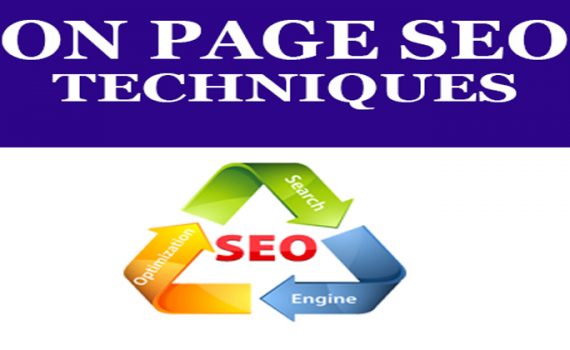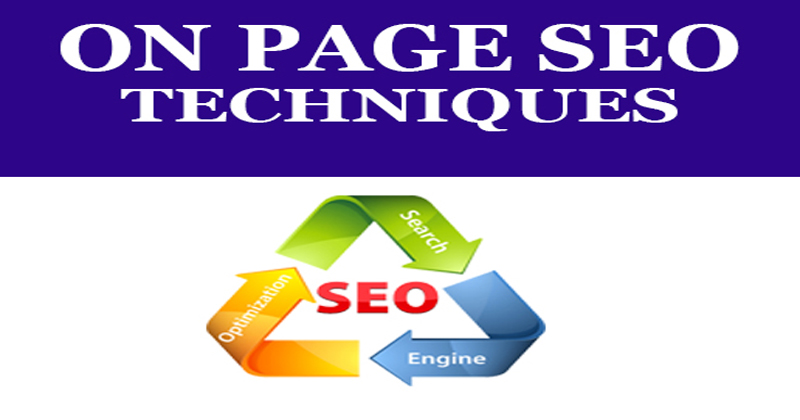
Onpage optimization techniques you should focus on
Category : On-page SEO
SEO isn’t specific to a particular type of content or a website — it’s a bunch of practices aimed at appearing on the higher positions in the search engines. It requires a lot of geeky technical stuff like understanding of redirects, HTML and web server technology.
A successful SEO campaign still starts with some important on-page SEO factors that you must optimize before you do anything else.
So, What are the most important techniques you need to do with?
Fulfill Search Queries
– Create/optimize the existing content to the audience’s needs. This helps to gain SERP visibility, attract more qualified traffic and build trust.
– Make sure to have an H1 tag on every website page. Most CMSs automatically wrap your title in <h1> tag, but some do not. The H1 tag is a must on any website page as long as it helps search engines understand what your page is all about.
Optimize the URL slug:
– Keep it as short as possible (4 words at most—it makes it easy to understand and remember by users, but it also improves your CTR.)
– Also, try to include the keyword in the URL as well—it will definitely help with the on-page optimization.
If your page has already been published for a while, do not change the URL, especially if it’s already ranking in the – – – SERPs or if other pages already link to it. Doing this would mean you are migrating your URL and it’s best to avoid it in most cases.
Optimize the Page URL
Have an instance of your focus keyword in the URL, without using any special character, symbol, commas, etc.
Use hyphens (instead of underscore) to separate different strings. This makes the URL clean and easier for the user to guess the content on the page.
In addition, opt for a user-friendly URL structure for your entire website. Something that both search engines and the user can remember and relate to, but without any compromise to your business goals.
For e.g., a permalink structure like ‘yourdomain/this-is-test-post’ is preferred by many websites, but if you are a news website you may want to follow a date wise structure like ‘yourdomain/2019/08/15/this-is-a-test-post’.
Optimize the meta description
– Include the target keyword in this description.
– Remember, the meta description should be under 230 characters—anything above that will be truncated by Google in the SERPs.
– Same as with the page titles, keywords are not everything. Your meta description should be compelling and tell readers exactly what information will be provided on the page.
– While meta descriptions don’t have a direct impact on rankings, they will increase the click-through rate and that is a ranking factor.
Optimize the images
The efforts on page optimization of images placed on the most important promoted pages will pay off in spades. At least you should include the ALT tag.
That’s how the optimized images can help you:
– they influence the ranking of the promoted page;
– they are included on the list of image searches;
– attract more traffic to the site.
Compress images to improve the loading time of the website and supply them with the alt text. Search engines use alt text to identify the content of the web page, so it’s a great way to make the website more accessible and improve its ranking.

Important Onpage optimization techniques
Create Trust & Engagement Through UI, UX, and Branding
– Improve your website performance. Website performance metrics like the page load speed are a part of UX. Make sure to research and improve these to boost the conversion and keep your visitors satisfied.
– Responsive Web Design. Back in 2015 Google started penalizing mobile-unfriendly websites. The number of mobile visitors is growing each year and today RWD is a must.
– Build trust through UI, visuals, navigation, branding — all these pieces define if your website looks trustworthy.
Include social media sharing buttons. Help your visitors save and share your content across the Web.
Include your focus keyword
Remember, on-page optimization is not about gaming the system. It’s about sending the right signals, both to the user and to the search engine.
Essentially, on-page SEO is all about optimizing your content to answer a particular user query.
For that, use strings (technically called keywords) that relate to the user query.
Use a combination of exact match keywords and related keywords, but don’t overdo that.
Ideally, an exact match keyword density of 1.5 to 2%, sprinkled with a few more LSI keywords is good enough to send the right signals to the search engines.
Optimize the page content
Now that you have optimized the meta data supporting your page or blog post, it’s time to move on to optimizing the actual content on it.
Here are the steps you need to follow to do this:
Try to include the keyword in the h1 heading, but do not force this. Again, it is far better to publish natural (rather than keyword-stuffed) content.
– Make sure your page or blog post has an h1, but remember that there should be only one h1, and it should be above the fold. Typically, your h1 will be the actual title of the blog post or page.
– Same as with the meta tags optimization, focus on creating an attractive, compelling h1, rather than something that feels built exclusively for Google’s crawlers.
– You can use the CoSchedule’s Headline Analyzer to analyze your headline.
Optimize the content in the body of the page.
– Try to include your target keyword in the first 100 words of the page or blog post.
optimizing on page copy for seo keyword
– In general, avoid including the exact target keyword more than 3-4 times/page.
– Add other keywords from the same keyword bucket in the body of your content. This will help Google contextualize your page or blog article, so that it shows it to users searching for the information you provide.
– Try to add synonyms to your target keyword as well. This is an excellent move not only because it will help Google contextualize your content, but also because it will help you avoid using the exact target keyword too many times.
– Include LSI (Latent Semantic Indexing) keywords too. These keywords are semantically related to your target keyword. To find more LSI keywords, go to https://lsigraph.com, enter your target keyword and pick the most relevant suggestions to include in the body of your page content.
Read more How to optimize image for SEO
_______________________________________________________________________________
Please contact us for seo service packages at TDHSEO.COM.
TDHSEO Team
Email: tdhseo@gmail.com
Skype: tdhseo
https://www.facebook.com/tdhseo
Thank you!